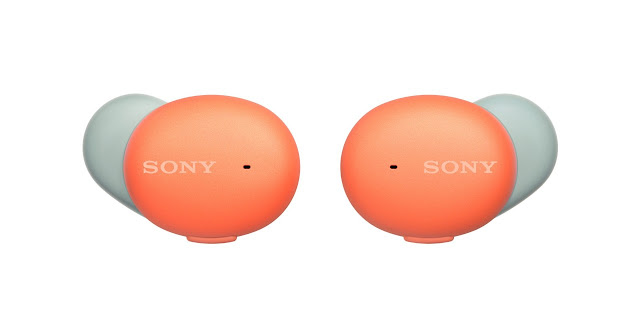Sony WF-H800 h.ear in 3 Truly Wireless Headphones
Sony held their annual IFA press conference earlier today but surprise, many of the devices I mentioned that would be coming were not shown during the show. Of course this does not mean they are not coming, but their availability will be limited.
The WF-H800 is one of those devices unfortunately. It appears the wireless headset will only be sold initially in Asia, including Australia. There is no press release anywhere that I can find, so I will just recap the information from various sources.
Update: the Bluetooth certification is up, it shares the same certification as the WF-1000XM3, so I would imagine that they share the same BT chip, MT2811. I suspect the Mediatek chip is a rebranded Airoha AB1552, but this is only a guess. I will explain my reasoning in a future post.
Design
The new WF-H800s feature a compact and modern design, with two-tone colour options that follow the rest of the h.ear on 3 line and new A-Series Walkman, black, red, orange, green and blue. The headset features a smaller silicone ear buds which should fit easier into the ear canal. A special Tri-hold structure makes contact with the ear in 3 places for a snug and secure fit according to Sony.
Features
The headset features a 6mm driver, Bluetooth 5.0, and NFC on the charging case. Wireless codec support is only AAC and SBC, lacking LDAC like its bigger brother, the WF-1000XM3. There is no noise cancellation but that was expected from the model name. There is support for Google Assistant and Alexa but no mention of Siri.
 On the product page, Sony mentions a new Bluetooth chip and in the product video states L/R simultaneous Bluetooth transmission. This looks to be the same features of the Mediatek MT2811 has and that is present in the new WF-1000XM3 and WI-1000XM2.
On the product page, Sony mentions a new Bluetooth chip and in the product video states L/R simultaneous Bluetooth transmission. This looks to be the same features of the Mediatek MT2811 has and that is present in the new WF-1000XM3 and WI-1000XM2.
It would make sense for Sony to use the same chip as to reduce cost for development and production. The WF-H800 is on the US FCC thankfully, but we will have to wait till September 21st before the internal photo documents become available to view to determine what BT chip is used.
But the photos might end up being too blurry to see anything like with the original WF-1000XM3 FCC photos, so we might have to wait until a teardown or a Bluetooth certification confirming the chipset.
Like the WF-1000XM3, the WF-H800 also feature DSEE HX to restore the high-range sound lost in compression, I never use it on my A17, so not sure how well it works. Battery life is rated up to 16 hours, 8 hours on the earbuds and another 8 hours from the charging case via a recharge. A 10 min quick charge yields up to 70 minutes of use. Decent figures but would interesting to see a real world test of the battery life.
On the product page, an exploded view is provided, low resolution, but still enough to give an idea of what is inside. The driver is also 6mm like the WF-1000XM3 so the question is if they are shared or 2 different models. If anyone is able to find a larger size of this photo, please link it below in the comments.
The only price I could find is for Australia, $349.95 AUD with availability in January 2020. This is $50 less than the WF-1000XM3 and perhaps a bit overpriced in my opinion. A better price would be $299.99 AUD. If anyone knows any other prices for your local area, please post them below in the comments.
Check out some live photos from Philweb. I feel these need to be priced more aggressively if Sony intends to bring these to North America. If anyone finds any interesting hands on articles or videos, feel free to link them in the comments.










Hi, what do you think of a review on WH-H910N? Would love to see that. The IFA conference was so short and didn't mention it, but I wonder if it has been shown in Sony's booth?
ReplyDeleteFrankly, I want to know if it has a dedicated noise cancelling chip like wh1000xm3 or not.. It seems there are no information about this yet or I just missed them?
Will have a post up shortly.
DeleteAslo I'm really interested to know what kind of NC chip does wi-1000xm2 features, is it a smaller version of QN1 like wf1000xm3 or a new kind of chip? Thanks..
ReplyDelete